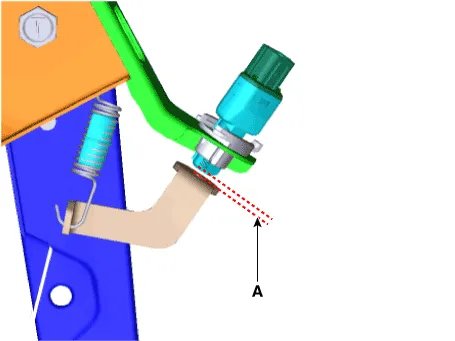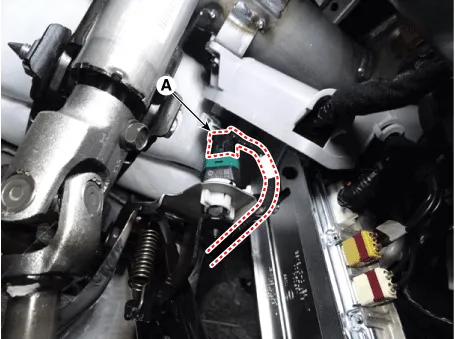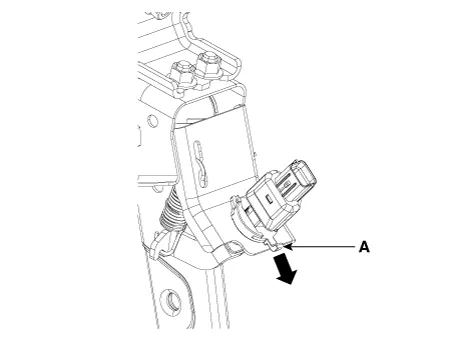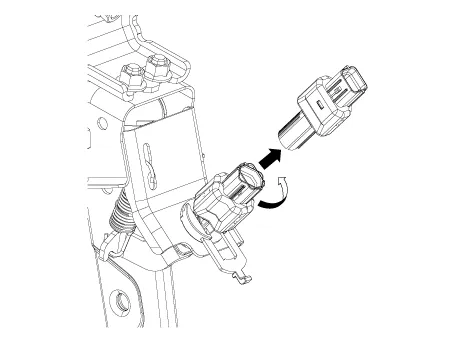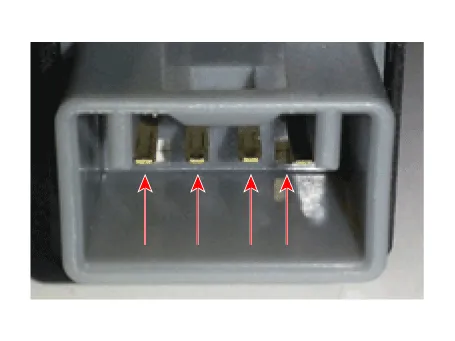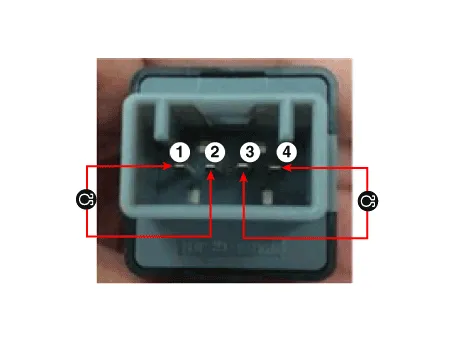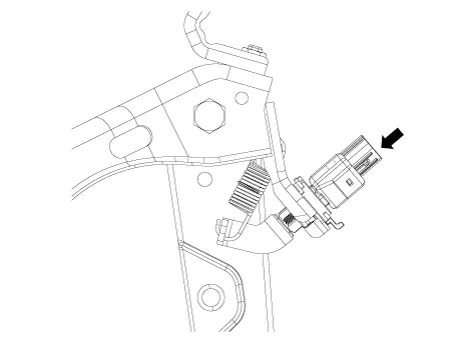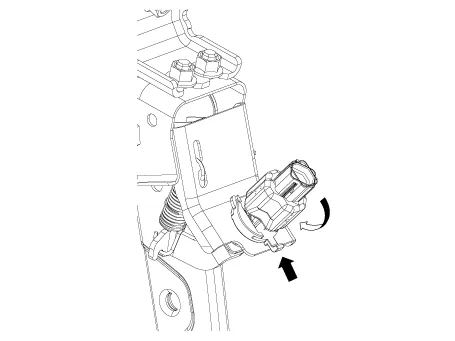Hyundai Santa Fe (TM): Brake System / Stop Lamp Switch. Repair procedures
| Adjustment |
| 1. |
Turn ignition switch OFF and disconnect the negative (-) battery cable.
|
| 2. |
Remove the lower crash pad.
(Refer to Body - "Crash Pad")
|
| 3. |
Confirm the gap between stop lamp switch and bracket.
|
| 4. |
If the gap between stop lamp switch and bracket is not 1.0-2.0mm (0.04-0.08in),
check the mounting clip and other part of around stop lamp.
|
| 5. |
If there is normal, remove the stop lamp switch and then install again.
|
| Inspection |
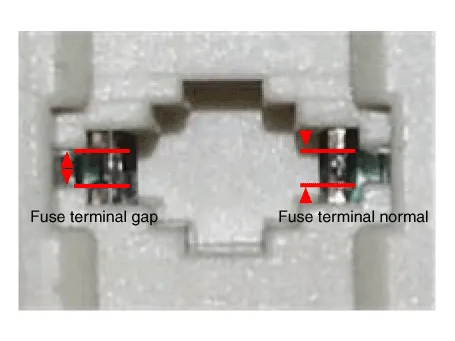
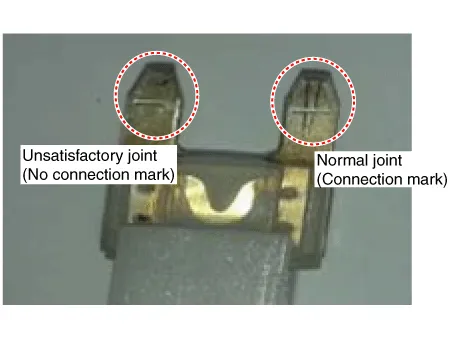
| 1. |
Analyze diagnostic tool data and confirm if there is anything wrong
with the stop lamp switch.
|

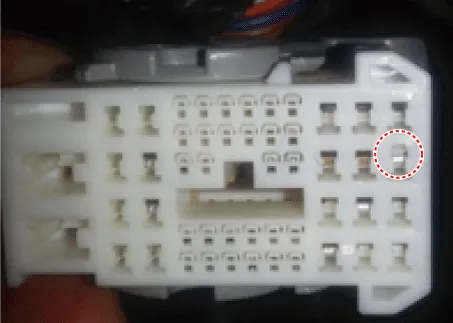
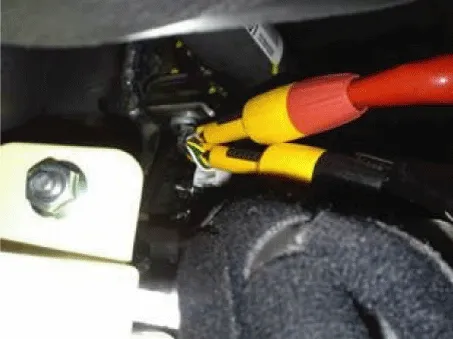
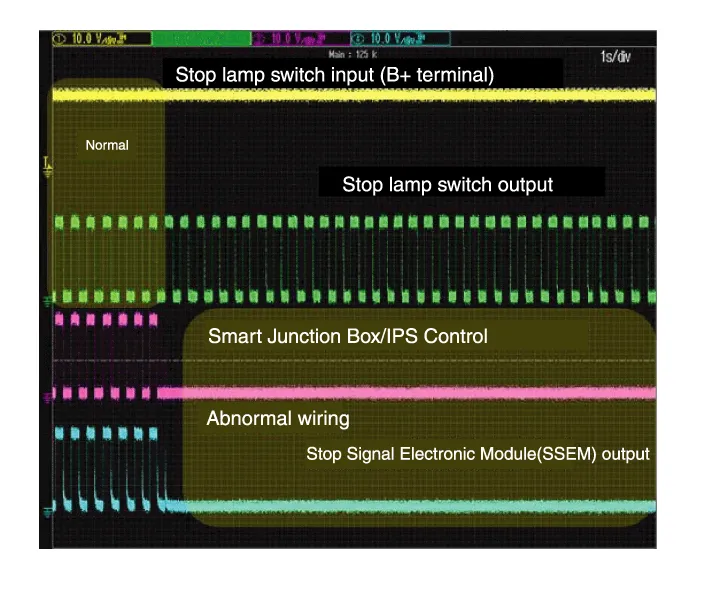
| Removal |
| 1. |
Turn ignition switch OFF and disconnect the negative (-) battery cable.
|
| 2. |
Remove the lower crash pad.
(Refer to Body - "Crash Pad")
|
| 3. |
Disconnect the stop lamp switch connector (A).
|
| 4. |
Pull the locking plate (A) as indicated by the arrow.
|
| 5. |
Turn stop lamp switch (A) 45° counterclockwise and remove it.
|
| 6. |
Inspect a removed stop lamp switch along the below procedures.
|
| Installation |
| 1. |
Fix the brake pedal arm and insert fully the stop lamp switch as hiding
contact part.
|
| 2. |
After inserting, turn the stop switch (A) 45° clockwise, and then assemble
locking plate by pushing.
|
| 3. |
Confirm the gap between stop lamp switch and bracket.
|
| 4. |
Connect the stop lamp switch connector (A).
|
| 5. |
Install the lower crash pad.
(Refer to Body - "Crash Pad")
|
Schematic Diagram System circuit diagram Terminal Function Teminal Description 1 IGN1 2 Engine Control Module (ECM) 3 - 4 B+ 5 Stop Lamp 6 Gruound
Troubleshooting 1. Part diagnosis Items Cause Symptom Switch fuse Faulty fuse connection, Damaged fuse – DTC Code : P0504 – Symptom : Shifting gear trouble, Starting failure, Cruise control function cancelation trouble, EPB function cancelation trouble, Stop lamp lighting trouble, ESP OFF light illuminated.
Other information:
Hyundai Santa Fe (TM) 2019-2023 Service and Repair Manual: Compressor. Repair procedures
Removal 1. If a compressor is available, the air conditioner is operated for a few minutes in the engine idle state and then the engine is stopped. 2. Disconnect the negative (-) battery terminal.
Hyundai Santa Fe (TM) 2019-2023 Service and Repair Manual: Parking Distance Warning (PDW)
Description and operation Description • PDW consists of 8 sensors (front : 4 units, rear : 4 units) that are used to detect obstacles and transmit the result in three separate warning levels, the first, second and third to IBU via LIN communication.
Categories
- Manuals Home
- Hyundai Santa Fe Owners Manual
- Hyundai Santa Fe Service Manual
- Maintenance
- Troubleshooting
- Restraint
- New on site
- Most important about car

